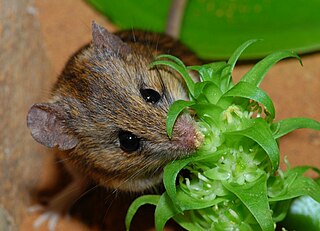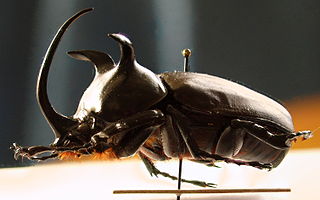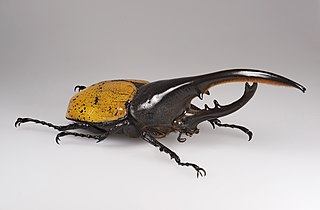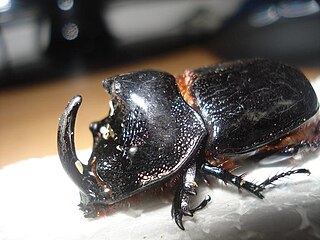The Pierce-Arrow Motor Car Company was an American motor vehicle manufacturer based in Buffalo, New York, which was active from 1901 to 1938. Although best known for its expensive luxury cars, Pierce-Arrow also manufactured commercial trucks, fire trucks, boats, camp trailers, motorcycles, and bicycles.

Archery had its debut at the 1900 Summer Olympics and has been contested in 16 Olympiads. Eighty-four nations have competed in the Olympic archery events, with France appearing the most often at 31 times. The most noticeable trend has been the excellence of South Korean archers, who have won 27 out of 39 gold medals in events since 1984. It is governed by the World Archery Federation. Recurve archery is the only discipline of archery featured at the Olympic Games. Archery is also an event at the Summer Paralympics.

Curare is a common name for various alkaloid arrow poisons originating from plant extracts. Used as a paralyzing agent by indigenous peoples in Central and South America for hunting and for therapeutic purposes, curare only becomes active when it contaminates a wound. These poisons cause weakness of the skeletal muscles and, when administered in a sufficient dose, eventual death by asphyxiation due to paralysis of the diaphragm. Curare is prepared by boiling the bark of one of the dozens of plant sources, leaving a dark, heavy paste that can be applied to arrow or dart heads. In medicine, curare has been used as a treatment for tetanus and strychnine poisoning and as a paralyzing agent for surgical procedures.

Dynastinae or rhinoceros beetles are a subfamily of the scarab beetle family (Scarabaeidae). Other common names – some for particular groups of rhinoceros beetles – include Hercules beetles, unicorn beetles or horn beetles. Over 1500 species and 225 genera of rhinoceros beetles are known.

Aethomys is a genus of rodent from Africa. They are commonly referred to as rock rats, bush rats or rock mice.

The men's double York round was one of three archery events on the archery at the 1908 Summer Olympics programme. Arrows were shot in ends, or groups, of three. The archers shot a total of 288 arrows each over the two rounds of 144. The competition was held on Friday, 17 July and Saturday, 18 July, with one round each day. The archers had to contend with significant rain and wind on the first day and gusts of wind on the second.
Arrow poisons are used to poison arrow heads or darts for the purposes of hunting and warfare. They have been used by indigenous peoples worldwide and are still in use in areas of South America, Africa and Asia. Notable examples are the poisons secreted from the skin of the poison dart frog, and curare, a general term for a range of plant-derived arrow poisons used by the indigenous peoples of South America.

Erotylidae, or the pleasing fungus beetles, is a family of beetles belonging to Cucujoidea containing over 100 genera. In the present circumscription, it contains 6 tribes and 10 subfamilies. In other words, the narrowly circumscribed Erotylidae correspond to the subfamily Erotylinae in the definition sensu lato. There are doubts on the monophyly of lower ranked taxa within Erotylidae, with further phylogenetic studies requiring better sampling and studies of unexplored character sets, for example the metendosternite and penile flagellum, which are generally lacking detailed morphological studies within the Coleoptera literature. The Eroytlina taxonomy is based on traits such as their different colors and not off morphological differences like mouthparts, thorax, and abdominal terminalia (Pecci-Maddalena).

Endomychidae, or handsome fungus beetles, is a family of beetles with representatives found in all biogeographic realms. There are around 120 genera and 1300 species. The family was established based on the type genus Endomychus, a genus erected in 1795 by Panzer which was applied to a species that Linnaeus called Chrysomela coccinea. As the common name suggests, Endomychidae feed on fungi. Crowson, in his influential treatment of the beetles, placed the family within the Cucujoidea. They have a tarsal formal of 4-4-4 or 3-3-3 and the wings lack a closed radial cell. The second antennal segment has a sensory appendage that is as long as the third antennal segment. The family has also been grouped with the Coccinellidae in a group called the Trimera for having pseudotrimerous tarsi. A 2015 molecular phylogeny study found that the Cucujoidea were found to be non-monophyletic and the Endomychidae was refined with the removal of the Anamorphinae from within the family and elevated to the status of a full family, Anamorphidae. Mycetaeinae and Eupsilobiinae were also found not to belong within the clades of the core Endomychidae, and likewise reclassified into the families Mycetaeidae and Eupsilobiidae.

The red-headed cockchafer or red-headed pasture cockchafer is a species of Australian scarab beetle in the genus Adoryphorus. It is a pasture pest in Victoria, New South Wales, South Australia and Tasmania. It has become naturalised in Canterbury, New Zealand, where it was first recorded in 1963.

Omoglymmius is a genus in the ground beetle subfamily Rhysodinae. There are more than 150 described species in Omoglymmius, found on every continent except Antarctica.

Orphinus is a genus of beetles in the family Dermestidae, the skin beetles. The genus is distributed in Africa, Asia, and the Australian region, especially in tropical areas; at least one species is cosmopolitan. There are about 88 species.

Arrow Peak is a high mountain summit in the Grenadier Range of the Rocky Mountains of North America. The 13,809-foot (4,209 m) thirteener is located in the Weminuche Wilderness of San Juan National Forest, 8.7 miles (14.0 km) south-southeast of the Town of Silverton in San Juan County, Colorado, United States.

Charles Raymond Dunlop was an Australian tennis player who won the 1931 Australian Championships in men's doubles. He was also a finalist in the 1934 Australian Championships in mixed doubles. He was a nephew of Alfred Dunlop, 1908 Australasian Championships doubles champion and singles runner-up.

Eupatorus siamensis is an endemic species of rhinoceros beetle in Isan, Thailand.

Oryctini is a tribe of beetles in the Dynastinae.

Dynastini is a tribe of rhinoceros beetles in the family Scarabaeidae.

Heteronychus is a genus of beetles belonging to the family Scarabaeidae, subfamily Dynastinae.

Trichogomphus is a genus of Asian beetles in the family Scarabaeidae and tribe Oryctini.
Haploscapanes is a genus of insect in the scarab beetle clade. The genus lives along the western Australian coast.

















